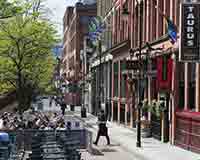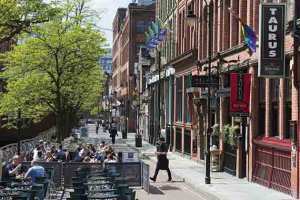 Forget hotspots, think pink spots. From the deep fuchsia of Brighton and Manchester through to the pale lilac of Chester and York, some towns and cities have become centres for the UK’s gay and lesbian population.
Forget hotspots, think pink spots. From the deep fuchsia of Brighton and Manchester through to the pale lilac of Chester and York, some towns and cities have become centres for the UK’s gay and lesbian population.
Within each city the gay community often moves into low-rent areas and make them funky – often so funky they can’t afford to be there anymore. They make them safe and fun. So safe, and such fun, they are a magnet for others who then swamp the area and so the gay crowd gradually moves elsewhere. It is a familiar trajectory.
But has this pattern changed these cities’ property markets and local economies?
Thriving centre
In Manchester – as well as in some unlikely pink spots like Bicester – the answer is a loud and proud yes.
Manchester’s gay village is among the largest – and oldest – in the UK. The New Union pub on the corner of Canal Street has been a gay venue since the 1850s. It’s now the fairy on the top of the tree of 30 bars and clubs and hotels, catering to a weekend visitor trade of 20,000 and a wider catchment of 500,000.
The local property market feels the force, too. While some ventures have not thrived – a gay shopping centre in the early 1990s came and went amid misplaced excitement about the pink pound – others have been successful. Hotel operators within walking distance have done well and the residential market is hectic.
About 25% of the 3,000 city centre and Salford Quays flats traded each year are sold to, or sold by, LGBT buyers. Something similar is happening in some parts of London.
Lee Hill, residential sales and lettings manager at JLL in Manchester, says: “It really began in the gay village around Canal Street in the early 1990s with three schemes by Carol Ainscow’s Artisan Holdings.”
“Recently we’ve seen the apartments with higher-price purchases go to gay buyers, but equally lots of gay buyers go for two-bed, two-bath apartments like everyone else. Developers know this is an important market. We’ve had developer clients like Lend Lease take stalls at the Manchester Pride event to market Cypress Place, 215 units in the city’s Green Quarter. I don’t know if they sold predominantly to gay buyers, but everything got sold.”
Andrew Stokes, chief executive at Marketing Manchester, says this kind of economic impact is not easy to replicate – but where a genuine gay village exists, local councils and businesses can help it grow.
The Central Manchester Development Corporation – formed in 1988 and disbanded in 1996 – invested in lighting and paving Canal Street as part of a £4m programme to smarten up the city’s dingy canals. It followed moves by independent landlords like Carol Ainscow, founder of Manto, the first gay bar not to hide behind frosted glass.
“The CMDC speeded things up, but it was obvious the area with its canals and parks could be a beautiful destination. It would have happened without them, but differently,” says Stokes. “Many other towns and cities come to ask us how Manchester has done it – today, after Ireland’s referendum on marriage equality, we’re fielding calls from Irish towns anxious to get in on the gay marriage market. But to make it work you have to have something there already. There’s economic strength in the gay village, but you can’t just start from scratch.”
Scale and history
Leeds has flirted with an officially recognised gay village; Brighton, Birmingham and Nottingham have gone further, but few other cities have the scale and history required to make it a real economic driver.
Stokes is cautious about overstating the effects of gay spending. “I doubt there is much hotel development solely aimed at gay visitors – boutique Manchester hotels like La Villé and Velvet may be exceptions – but gay visitors are a vital part of the mix for all city-centre hotels,” he says.
Hoteliers see it the same way – gay is good, vital in some locations, but still just a part of the mix.
Russell Braterman is head of marketing at Premier Inn, responsible for five hotels and 951 bedrooms in central Manchester. zHe says: “We don’t actively model our business plans on a gay market, and we market to everyone, not just gay visitors. We don’t single them out.
“There is no question that in urban centres like Manchester and Brighton with a large LGBT population, it creates opportunities. But I don’t think LGBT customers are the majority of the market anywhere. That said, if you can’t fill a Manchester hotel during Pride weekend, then you’d better close down immediately.”
Success for some leisure operators has not been shared by all gay businesses. Many went to the wall as a (perverse) consequence of the extension of 2007 Equality Act anti-discrimination laws to the provision of goods and services. If gay customers no longer risked discrimination – or worse – by using mainstream businesses, they no longer had to turn to niche gay businesses to buy their hotel stays, insurance, legal work or household repairs.
Stephen Coote is director of the Gay Business Association. Founded in 1983, it used to boast a vast and eclectic membership. Today there are just 50 members. He explains: “The pink pound isn’t entirely history – but everyone is much more assimilated these days, which means fewer specific gay businesses. Combine that with the growth of online dating, and a more liberal attitude in straight bars, and it means big changes. London had 259 gay venues in 2005 – today we’re down to 100 – so you can see the trend.”
That trend has swept away entire gay districts like Earls Court, and threatened viability elsewhere. Braterman and Stokes acknowledge that gay spending patterns have changed, but add that all is not lost. It’s no longer a question of pink pounds being spent in gay businesses – but rather of a pound becoming Barbie pink one day, and a paler pink the next. It all depends on the occasion, they say.
Braterman explains: “Sometimes one wants a LGBT environment, and sometimes one doesn’t, and those occasions come and go. The idea of the pink pound was driven by need in the 1980s and 90s. When I took out my first life insurance policy, I had no choice but to go to a gay insurance broker because no mainstream brokers would write me a policy. Now I have a choice. But I still might want to spend in a LGBT environment for Pride, or out with friends, or whatever suits me.”
Precarious status
But not everything in the gay property world is rosy. Some bars are marketed towards hen parties, not LGBT customers, and there is pressure to replace independent venues with big-chain bars or brewery outlets. There’s also a sense that today’s liberal attitudes may evaporate as rapidly as they arrived.
Stokes, who for 10 years was chair of Manchester Pride’s organising committee, says: “The battle is never quite won. These things can be cyclical, the political right is on the rise all over Europe. Anyone in their 20s or 30s probably can’t remember what life was like before liberalisation because change has been so recent. There was a real need for gay spaces and places not long ago. Life was different then and it could be different again.”
Bicester: It’s good to shop
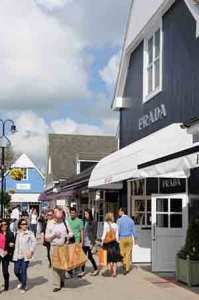 Bicester probably doesn’t feature on anyone’s list of pink spots – but it should. Value Retail, owner of the 234,000 sq ft Bicester Village Chic Outlet shopping mall, is a platinum partner of the International Gay & Lesbian Travel Association. The link, forged four years ago, brings US and Canadian gay tourists to the Oxfordshire outlet.
Bicester probably doesn’t feature on anyone’s list of pink spots – but it should. Value Retail, owner of the 234,000 sq ft Bicester Village Chic Outlet shopping mall, is a platinum partner of the International Gay & Lesbian Travel Association. The link, forged four years ago, brings US and Canadian gay tourists to the Oxfordshire outlet.
Speaking to EG from Fort Lauderdale, Florida, IGLA president John Tanzella says: “We’ve a partnership with all nine European Chic Outlet venues. Gay people like to shop – like everyone else – and the gay market was one the outlet had been looking at. We do a lot of promotions and trade fairs with them, we co-host receptions, and it has worked out nicely.
The outlet says it has worked for them – they’ve seen an increase in gay couples visiting and they’ve had good results.”
The volume of gay tourism to Britain is unknown – but it’s big enough for Visit Britain to organise marketing campaigns from its New York office.
Says Tanzella: “We must be talking 100,000 visits a year, or more. The main venues are London obviously, and Manchester – less so Brighton because if gay US travellers want a beach holiday they go to Spain or Mexico or Florida.”
Manchester in numbers
The gay village around Canal Street amounts to around 150,000 sq ft of commercial floorspace, yet according to city council figures from 2013, attracts 20,000 visitors each weekend. Annual events such as Pride in August and Sparkle, the trans event in July, directly add £20m to the local economy.
Hello to gay buyers
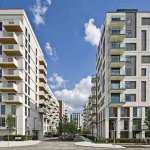 Marketing to gay buyers is a key strategy for many London residential developments.
Marketing to gay buyers is a key strategy for many London residential developments.
Tactics range from taking stands at Pride events – as Lend Lease and JLL have done for Manchester’s Green Quarter – or advertising in the gay media, as Helical Bar has done for Barts Square, EC1.
Nikki Gibbard, development executive, says: “We noticed we had loads of gay buyers, and thought we’d go with the trend. About a quarter of buyers are LGBT and a subset of the market we’re appealing to – older people moving back into town from the country, downsizers, cultural people. Marketing to gay buyers was common sense to us.”
East Village (pictured) – the rental and shared-ownership former Olympic athletes’ village at Stratford, E15 – is also targeted at gay people.
A spokesman for Get Living London says: “East Village represents a diverse snapshot of the capital. A home there offers easy commutes into the City, Canary Wharf and the West End with retail and green space on the doorstep. London-based young professionals are a key part of our audience and a great match with a gay audience.”
From pink spot to not spot
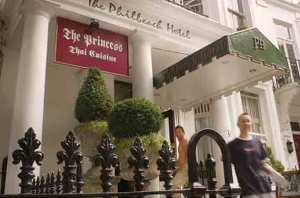 Earls Court was once the pinkest of pink spots. A bohemian hangout since the 1860s, to as late as 1997 there were more than 20 gay venues on a list headed by The Coleherne pub, Balans restaurant and The Philbeach Hotel.
Earls Court was once the pinkest of pink spots. A bohemian hangout since the 1860s, to as late as 1997 there were more than 20 gay venues on a list headed by The Coleherne pub, Balans restaurant and The Philbeach Hotel.
The Coleherne – the place where Freddie Mercury famously introduced Princess Diana to the gay world, and where a grisly list of serial killers sought their victims – is no longer pounding to a disco beat. Nor is Balans nor The Philbeach.
Rising property values and changing tastes helped wipe Earls Court off the gay map of London. That’s because the slightly seedy atmosphere of Earls Court seemed dated to a new generation for whom fear of police harassment no longer prompted a retreat into the ghetto.
David Mann, partner at Tuffin Ferraby Taylor and once a barman in Earls Court, says the demise was the result of rising property values combined with the dispersal of its core audience as more, and more appealing, options opening up elsewhere.
“The gay community moved to east London and Vauxhall/Clapham,” he says.
Today major development in the area isn’t targeting the gay population.
A spokeswoman for Capital & Counties, now promoting 7,500 new homes as part of its Earls Court masterplan, says: “We don’t have a party line on this, other than that we are happy to sell to everyone, with no preferences shown. Our marketing materials celebrate the best of west London and recognise the history of all of its historic and future residents.”
Pink spots
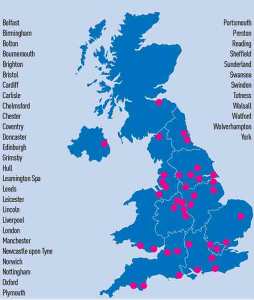 Every gay community of any size has its own Pride celebration held from May through to October. London Pride on 27 June is simply one among many, and according to both Brighton and Manchester, not the largest. These are the UK’s Pride locations.
Every gay community of any size has its own Pride celebration held from May through to October. London Pride on 27 June is simply one among many, and according to both Brighton and Manchester, not the largest. These are the UK’s Pride locations.







